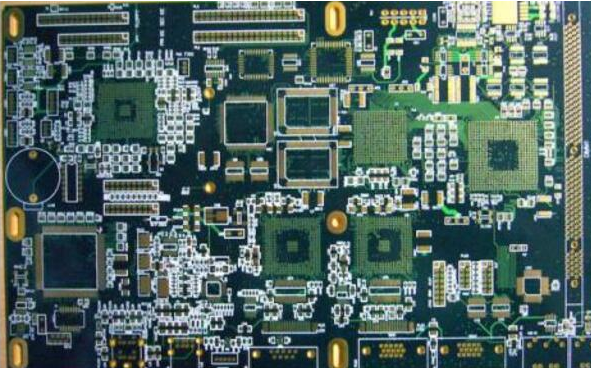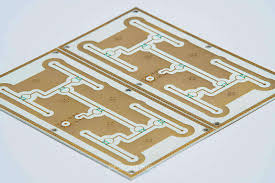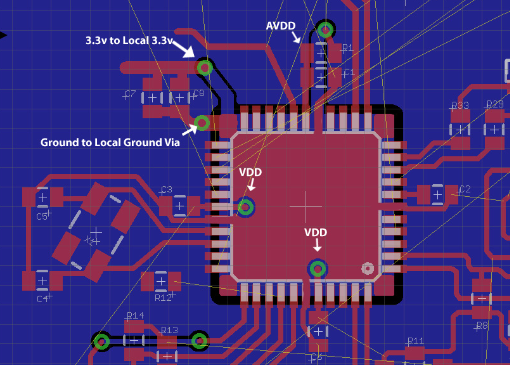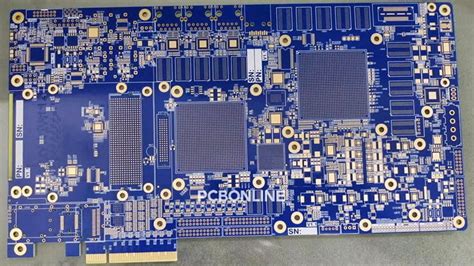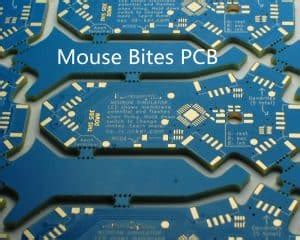PCB process in Protel
Many beginners feel that Protel software itself is easy to learn and use, but it is difficult to understand some concepts and terms outside the software. In order to promote this powerful EDA tool, the user manual of the software has been published in China, but unfortunately, these readings are often written for the software usage method itself, and there is little explanation of the concepts in the PCB process that readers are confused about. The author intends to select some items related to the PCB process in the software and explain them briefly so that people can better understand and use this software.
To design a printed board that meets the requirements, you must first understand the general process flow of modern printed circuit boards, otherwise it will be a closed-door process.
Generally speaking, printed boards are divided into single-sided, double-sided and multi-layer boards.
The process of single-sided printed boards is relatively simple, usually cutting → screen printing → corrosion → removing printing materials → hole processing → printing marks → applying flux → finished product.
The process of multi-layer printed boards is relatively complicated, namely:
inner layer material processing → positioning hole processing → surface cleaning processing → inner layer routing and graphics → corrosion → lamination pre-processing → outer inner layer material lamination → hole processing → hole metallization → outer layer graphics → corrosion-resistant solderable metal plating → photosensitive adhesive removal → corrosion → plug gold plating → appearance processing → hot melt → flux coating → finished product. The process complexity of double-sided boards is between the two, which will not be repeated here.
1.The concept of “layer”
It different from the concept of “layer” introduced in word processing or many other software to achieve the nesting and synthesis of pictures, texts, colors, etc.
- The “layer” in Protel is not virtual, but the actual copper foil layers of the printed board material itself. Nowadays, due to the special requirements of intensive installation of electronic circuit components, anti-interference and wiring, the printed boards used in some newer electronic products not only have upper and lower sides for routing, but also have interlayer copper foil in the middle of the board that can be specially processed.
- For example, the printed board materials used in current computer motherboards are mostly more than 4 layers. These layers are relatively difficult to process and are mostly used to set up power wiring layers with relatively simple routing (such as GroundLayer and PowerLayer in the software), and are often routed by filling large areas (such as ExternalPlane and Fill in the software). The surface layers at the upper and lower positions and the places where the middle layers need to be connected are communicated by the so-called “vias” mentioned in the software.
- With the above explanation, it is not difficult to understand the concepts of “multi-layer pads” and “wiring layer settings”. To give a simple example, many people have completed the wiring, and only found that many terminals of the connection have no pads when they print out.
- In fact, this is because they ignored the concept of “layer” when adding the device library, and did not define the pad characteristics of the package they drew as “multi-layer”. It should be reminded that once the number of layers of the printed board is selected, be sure to close the unused layers to avoid trouble and detours.
2.Via In order to connect the lines between the layers, a common hole is drilled at the intersection of the wires that need to be connected in each layer.
This is a via. In terms of technology, a layer of metal is plated on the cylindrical surface of the via hole wall by chemical deposition to connect the copper foils that need to be connected in the middle layers, while the upper and lower surfaces of the via hole are made into ordinary pad shapes, which can be directly connected to the circuits on the upper and lower surfaces, or not
Generally speaking, the following principles apply to the treatment of via holes when designing circuits:
(1) Use vias as little as possible. Once a via is selected, it is important to properly handle the gap between it and the surrounding entities, especially the gap between the lines that are not connected to the via holes in the middle layers, which is easy to be overlooked. If it is automatic wiring, you can select the “on” item in the “ViaMinimization” submenu to automatically solve it.
(2) The larger the required current carrying capacity, the larger the required via size. For example, the via used to connect the power layer and the ground layer with other layers must be larger.
3.Silkscreen layer (Overlay) In order to facilitate the installation and maintenance of the circuit
the required logo patterns and text codes are printed on the upper and lower surfaces of the printed board, such as component numbers and nominal values, component outline shapes and manufacturer logos, production dates, etc. When designing the silk screen layer, many beginners only pay attention to the neat and beautiful placement of text symbols, ignoring the actual PCB effect.
On the printed boards they designed, the characters are either blocked by components or erased by invading the soldering area. Some also put the component numbers on adjacent components. All these designs will bring great inconvenience to assembly and maintenance. The correct principle of silk screen layer character layout is: “no ambiguity, insert needles wherever there are gaps, and beautiful and generous.”
4.The particularity of SMD There are a large number of SMD packages in the Protel package library, that is, surface-mounted devices.
In addition to its small size, the biggest feature of this type of device is that it is distributed on one side without pin holes. Therefore, when selecting this type of device, it is necessary to define the side where the device is located to avoid “missing pins”. In addition, the text labels of this type of component can only be placed on the side where the component is located.
5.Grid-shaped fill area (ExternalPlane) and fill area (Fill) As the names of the two suggest
the network-shaped fill area processes a large area of copper foil into a mesh, and the fill area only retains the copper foil completely. During the design process, beginners often cannot see the difference between the two on the computer. In fact, as long as you enlarge the drawing, it will be clear at a glance. It is precisely because it is not easy to see the difference between the two, so when using them, they pay less attention to the distinction between the two. It should be emphasized that the former has a strong effect of suppressing high-frequency interference in circuit characteristics, and is suitable for places where large areas need to be filled, especially when certain areas are used as shielding areas, partitions or power lines with high current. The latter is mostly used in general line ends or turning areas and other places where small areas need to be filled.
6.Pads Pads are the most common and important concepts in PCB design, but beginners tend to ignore their selection and modification, and use circular pads in the design.
The type of pads for selecting components should comprehensively consider the shape, size, layout, vibration and heat conditions, force direction and other factors of the component. Protel provides a series of pads of different sizes and shapes in the package library, such as round, square, octagonal, round square and positioning pads, but sometimes this is not enough and needs to be edited by yourself. For example, for pads that generate heat and are subjected to greater force and current, you can design them into a “teardrop shape”. In the design of the output transformer pin pads of the color TV PCB that everyone is familiar with, many manufacturers use this form.
Generally speaking, in addition to the above, when editing pads by yourself, you should also consider the following principles:
(1) When the shape is inconsistent in length, you should consider that the difference between the connection width and the specific side length of the pad should not be too large;
(2) When it is necessary to route between the lead corners of the component, it is often more effective to use asymmetric pads;
(3) The size of the pad holes of each component should be edited and determined according to the thickness of the component pins. The principle is that the hole size is 0.2 to 0.4 mm larger than the pin diameter.

7.Various types of masks These masks are not only indispensable in the PCB manufacturing process, but also a necessary condition for component welding.
According to the location and function of the “film”, the “film” can be divided into two categories: solder mask (Top or Bottom Solder Mask) on the component surface (or welding surface) and solder mask (Top or Bottom Paste Mask) on the component surface (or welding surface).
As the name implies, the solder mask is a layer of film applied on the pad to improve the solderability, that is, the light-colored round spots slightly larger than the pad on the green board.
The situation of the solder mask is just the opposite. In order to make the manufactured board suitable for wave soldering and other welding forms, it is required that the copper foil at the non-pad part of the board cannot be tinned.
Therefore, a layer of coating must be applied to all parts other than the pad to prevent tin from being applied to these parts. It can be seen that the two films are complementary. From this discussion, it is not difficult to determine the settings of items such as “Solder Mask Enlargement” in the menu.
8.Flying wires Flying wires have two meanings:
(1) Network connections similar to rubber bands for observation during automatic wiring.
After calling in components through the network table and making a preliminary layout, you can use the “Show” command to see the crossover status of the network connections under the layout, and constantly adjust the position of the components to minimize such crossovers to obtain the maximum automatic wiring pass rate. This step is very important.
It can be said that sharpening the knife does not delay the chopping of wood. Spending more time is worth it! In addition, after the automatic wiring is completed, which networks have not been routed can also be found through this function. After finding the unrouted networks, you can compensate them manually. If you really can’t compensate, you have to use the second meaning of “flying wires”, which is to connect these networks with wires on the future printed board. It should be explained that if the circuit board is mass-produced on an automatic line, this flying wire can be regarded as a resistor element with a 0 ohm resistance and a uniform pad spacing for design.

